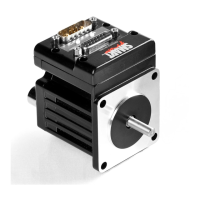Moog Animatics SmartMotor™ Developer's Guide,Rev. L
Page 233 of 909
Each of these parameters has its own scaling factor to tailor the overall performance of the
PID control to the specific load conditions of any one particular application. The scaling factors
are as follows:
KP Proportional coefficient
KI Integral coefficient
KD Derivative coefficient
KL Integral limit
Tuning the PID Control
The task of tuning the PID control is made difficult by the fact that the parameters are so
interdependent. A change in one can shift the optimal settings of the others. The SMI software
has a Tuner tool, which is an automated utility for optimizing the settings. For details, refer to
the Tuner on page 82. Even if you use the Tuner tool, you should still read through this section
to understand how to tune a servo and the interaction between the tuning parameters.
When tuning the motor, it is useful to have the Motor View tool running, which will monitor
various bits of information that describe the motor's performance. For details on the Motor
View tool, see Motor View on page 68.
NOTE: In most cases, it is unnecessary to tune a SmartMotor. They are factory
tuned, and stable in virtually any application.
The following are the tuner parameters and their descriptions:
KP=formula Set KP, proportional coefficient
KI=formula Set KI, integral coefficient
KD=formula Set KD, derivative coefficient
KS=formula Set KS, velocity filter option for KD (value is 0, 1, 2, or 3; larger
number is longer filter time).
KL=formula Set KL, integral coefficient limit
F Update PID control
Using F
The F (update PID filter) command is used to update changes to any of the tuning parameter
settings. Keep in mind that the new parameter settings do not take effect until the F command
is issued. For example:
KP=100 'Initialize KP to some value
F 'Load into present PID filter
Part 1: Programming: Tuning the PID Control

